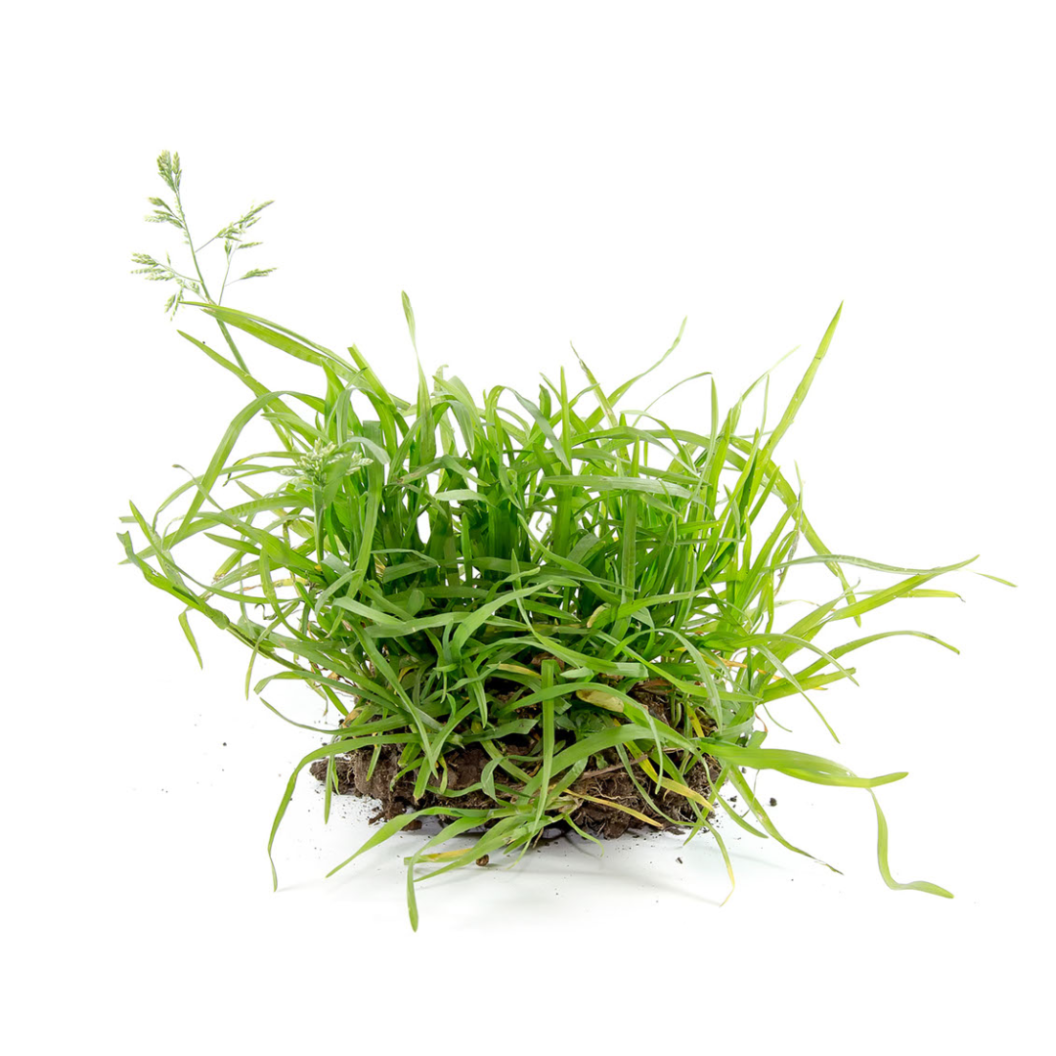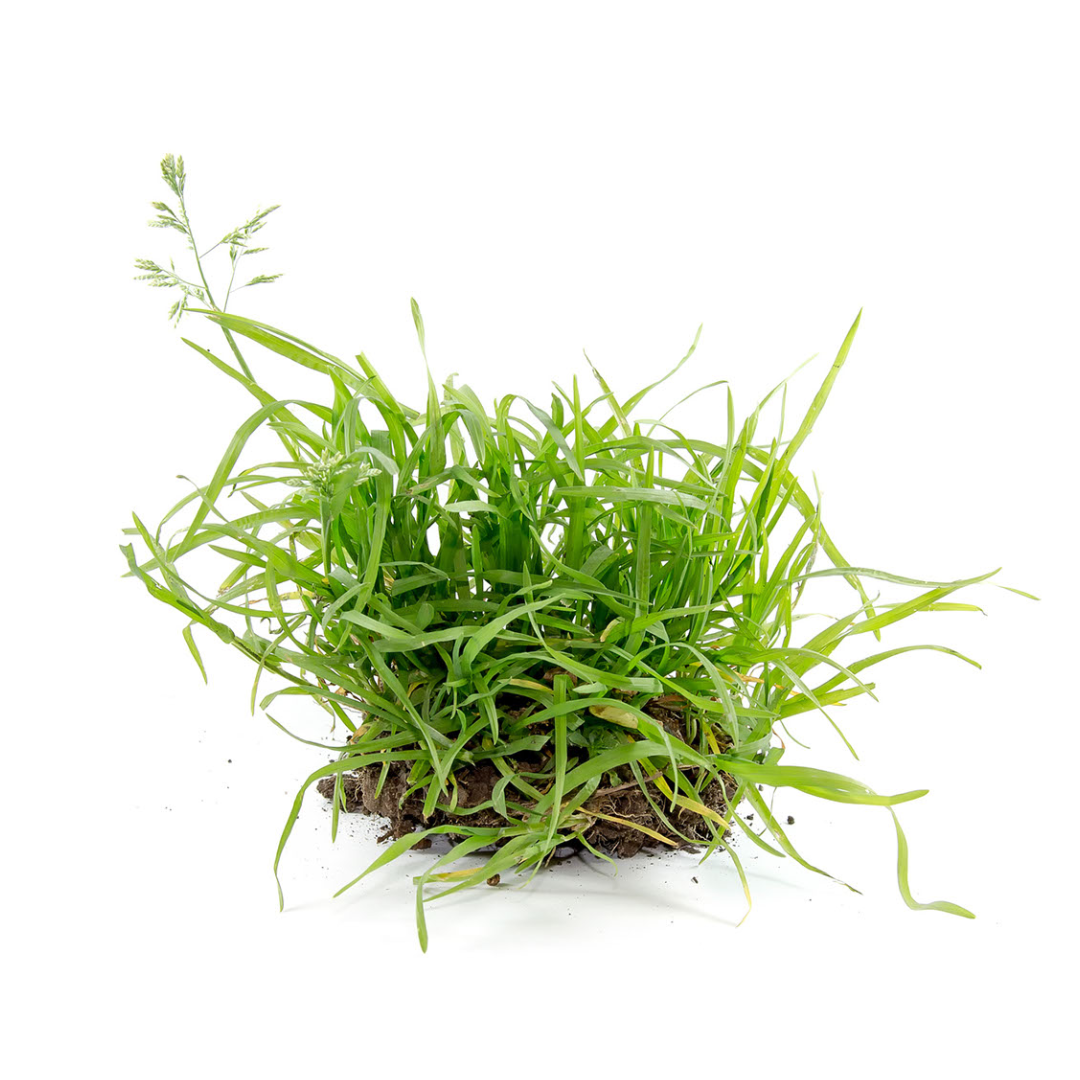
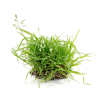
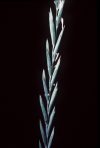

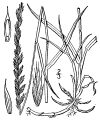
Quackgrass
DESCRIPTION: Quackgrass is a cool-season grass that has long, flat, green leaves that grow from a thick, underground stem called a rhizome. These rhizomes spread quickly and make it difficult to get rid of the plant once it has established itself in an area. In the summer, quackgrass produces tall spikes of flowers. The plant is known for being hardy and able to survive in a veriety of soil types and growing conditions, making it a common sight in many parts of the world. Although it is widely considered a nuissance weed, some people appreciate its ability to stabalize soil and prevent erosion. It has been used as erosion control, as a forage crop for livestock, and even as a decorative plant in some landscaping designs.
SCIENTIFIC NAME: Elymus repens (formerly named Agropyron repens)
OTHER NAMES: Couchgrass, Witchgrass, Doggrass, Quickgrass, Scutchgrass, Twitchgrass
LEAF TYPE: Grassy
FLOWERS: Quackgrass produces flowers on tall, slender stems that grow above the grassy leaves. The flowers are typically small and narrow, with a spike-like shape that can be up to 15 cm long. They are usually a beige or purple color and have a slightly fuzzy texture. The overall appearance of the flowers can be described as delicate and airy, with the individual blooms arranged in a neat, organized pattern along the stem. When the flowers are in full bloom, they can create a beautiful and subtle display that adds a touch of natural beauty to the surrounding landscape.
LEAVES: Quackgrass leaves are long and narrow, with a pointed tip and a flat surface. They are typically a bright, vibrant green color and have a slightly rough texture. The leaves grow from a thick, underground stem called a rhizome, which allows the plant to spread quickly and form dense patches in the surrounding area. When viewed up close, the leaves of Elymus repens may have small veins running through them, which can give them a slightly ribbed appearance. Overall, the leaves of this plant are simple and unassuming, with a classic grassy look that is characteristic of many other members of the Poaceae family.
LIFE CYCLE: Perennial
HOW TO IDENTIFY: Identifying quackgrass is relatively easy once you know what to look for. Quackgrass has long, thin leaves that are rough to the touch and grow from a thick underground stem called a rhizome. The leaves usually have a pointed tip and are a bright, vibrant green color. In the summer, quackgrass produces tall, slender stems that can reach up to 15 cm long, with small flowers that are either beige or purple in color. Quackgrass can also form dense patches in your lawn or garden, making it easy to spot once you know what you're looking for. Additionally, when you pull up a clump of grass, you may notice that quackgrass has a thick, white, fibrous root system that sets it apart from other grasses. By looking for these key characteristics, you can easily identify quackgrass and take steps to control its growth if necessary.
MECHANICAL CONTROL RECOMMENDATIONS:
1. Hand pulling - More Info
2. Tilling - More Info
3. Smothering - More Info
4. Mowing - More Info
5. Solarization - More Info
6. Flame Weeding - More Info
7. Cultivation and Hoeing - More Info
CHEMISTRY RECOMMENDATIONS:
"Pre-emergent herbicides:
Prodiamine: This herbicide provides effective pre-emergent control of many grassy and broadleaf weeds, including some grassy perennial weeds like quackgrass. It forms a barrier in the soil that prevents weed seedlings from emerging.
Dithiopyr: Similar to prodiamine, dithiopyr is a pre-emergent herbicide that provides control against various grassy and broadleaf weeds. It's also known to have some activity against quackgrass.
Pendimethalin: Pendimethalin is another pre-emergent herbicide that targets a range of grassy and broadleaf weeds. While it might not provide complete control of quackgrass, it can help in reducing its growth.
Oryzalin: Oryzalin is used to prevent the growth of many annual grasses and broadleaf weeds. It may offer some suppression of quackgrass germination and establishment.
Isoxaben: While primarily used for broadleaf weed control, isoxaben can have some effect on preventing the emergence of certain grassy weeds, including quackgrass.
Post-emergent herbicides:
Glyphosate: Glyphosate is a broad-spectrum non-selective herbicide that can effectively control many types of weeds, including quackgrass. However, it will also kill desirable plants, so it should be used with caution and only on non-crop areas.
Fluazifop-p-butyl: This herbicide is specifically designed for grassy weed control and may offer some suppression of quackgrass. It's important to apply it when the quackgrass is actively growing and before it reaches maturity.
Clethodim: Clethodim is another herbicide designed for grass control and can be effective against some grassy weeds, including quackgrass. As with fluazifop-p-butyl, timing is important for optimal results.
Fenoxaprop-p-ethyl: Fenoxaprop-p-ethyl is a post-emergent herbicide that targets grassy weeds. While it may not provide complete control of quackgrass, it can help to suppress its growth.
Sethoxydim: Sethoxydim is effective against annual and perennial grasses and could potentially offer some control of quackgrass.
Quizalofop-p-ethyl: Quizalofop-p-ethyl is used for grassy weed control in certain crops and non-crop areas. It can be effective against some grassy weeds, but its effectiveness on quackgrass may vary.
Selective herbicides:
Fenoxaprop-p-ethyl: This herbicide is labeled for controlling certain grassy weeds in turfgrass. While it may not offer complete control of quackgrass, it could help suppress its growth in turf settings.
Mesotrione: While primarily used for broadleaf weed control, mesotrione has shown some effectiveness against quackgrass in certain situations. It's important to note that its control of quackgrass might not be as consistent as other grassy weeds.
Fluazifop-p-butyl: Specifically designed for grassy weed control, this herbicide might offer some suppression of quackgrass in areas where desirable grasses are being grown.
Clethodim: Clethodim is a selective herbicide for grass control and could potentially have an impact on quackgrass. Timing and multiple applications might be necessary.
Sethoxydim: Effective against various grassy weeds, sethoxydim could provide some control of quackgrass in certain settings.
Non-Selective herbicides:
Glyphosate: Glyphosate is one of the most widely used non-selective herbicides. It kills most plants it comes into contact with, including quackgrass. However, it's important to note that glyphosate will also kill desirable vegetation, so it should only be used in areas where you want complete vegetation removal.
Glufosinate-ammonium: This herbicide is another non-selective option that can control a variety of weeds, including quackgrass. Like glyphosate, it will also damage or kill any plants it contacts.
Diquat: Diquat is a contact herbicide that acts quickly to desiccate and kill plants. It's often used for aquatic weed control but can also be applied to terrestrial areas. It's important to note that while diquat is non-selective, it may not provide long-term control of quackgrass due to its underground rhizomes.
Pelargonic acid: This is a naturally occurring fatty acid herbicide that acts by desiccating plant tissues on contact. While it's non-selective, it might require multiple applications for effective control of quackgrass.
Acetic acid: Vinegar can be used as a non-selective herbicide, particularly for small-scale or home garden applications. It's important to note that vinegar solutions can vary in strength, and while they can damage plant tissues, they may not provide complete eradication of quackgrass.
Recommended Prevention
Recommended Control

